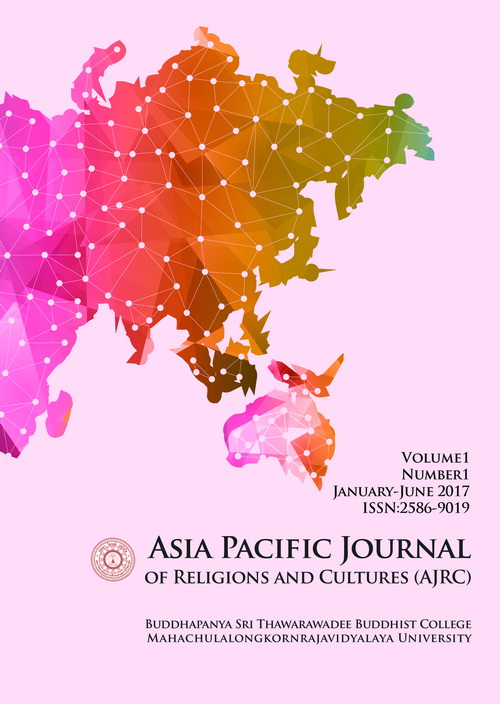Buddhism and Peace Promotion
Main Article Content
Abstract
Increasingly, issues of development with sustainable peace have been occupying a central place in any discussion on development and reform. In present-day society, unrestrained egotism has brought profound disruptions to the human heart and humanity is losing sight of the art of coexisting with nature. While a great deal has been achieved in respect of achieving external material development, however, this is not sufficient as we have not yet succeeded in bringing about peace and happiness or in overcoming suffering. With the advent of increasing violence and materialism in the society, peace promulgation occupies Increasingly, issues of development with sustainable peace have been occupying a central place in any discussion on development and reform. In present-day society, unrestrained egotism has brought profound disruptions to the human heart and humanity is losing sight of the art of coexisting with nature. While a great deal has been achieved in respect of achieving external material development, however, this is not sufficient as we have not yet succeeded in bringing about peace and happiness or in overcoming suffering. With the advent of increasing violence and materialism in the society, peace promulgation occupies a pivotal place.
Buddhism advocates that with the promotion of awakening to the interdependent reality, selfish compulsive responses will be replaced by loving -kindness, compassion, sympathetic joy, and equanimity. The degree of kindness, compassion and ympathetic joy largely depends upon the extent of internalization of the teachings of Buddhism. Teachings of Buddhism are pivotal in enhancing the universal values promulgated by Buddha. An active religion working in proximity with people, ave a wider scope to orient the people and demystify the gaps in religious teachings and practices in the society. The paper brings forward the teachings of Buddhism to promote peace.a pivotal place. Buddhism advocates that with the promotion of awakening to the interdependent reality, selfish compulsive responses will be replaced by loving -kindness, compassion, sympathetic joy, and equanimity. The degree of kindness, compassion and sympathetic joy largely depends upon the extent of internalization of the teachings of Buddhism. Teachings of Buddhism are pivotal in enhancing the universal values promulgated by Buddha. An active religion working in proximity with people, have a wider scope to orient the people and
demystify the gaps in religious teachings and practices in the society. The paper brings forward the teachings of Buddhism to promote peace.
Article Details
References
Publications. Retrieved on 19th May 2016. http://www.corteidh.or.cr/tablas/4876.pdf
Dalai Lama. (1995). Awakening the Mind, Lightening the Heart: CoreTeachings of Tibetan Buddhism. San Francisco: Harper.
Galtung, Johan, Carl G. Jacobsen, and Kai Frithjof Brand-Jacobsen. (2002). Searching for Peace: The Road to Transcend. (2nd ed.). London: Pluto Press.
Harris, Elizabeth J. (1994). Violence and Disruption in Society A Study of early Buddhist Texts. : Buddhist Publication Society. Retrieved 6 January 2016. http://www.accesstoinsight.org/lib/authors/harris/wheel392.html
Hopkins, Jeffrey. (2000). The Art of Peace: Nobel Peace Laureates Discuss Human Rights, Conflict and Reconciliation. Ithaca, NY: Snow Lio.
Shih Yi n-shun. (1980). Fofa yu renlei heping (Dharma and Human Peace). In Fojiao yuzhengzhi (Buddhism and Politics). Taipei: Dasheng wenhua.
Sivaraksa, Sulak. (1992). Seeds of Peace: A Buddhist Vision for Renewing Society. Berkeley, CA: Parallax Press.
Taisho shinshu Daizokyo (The Tripitaka, new compilation of the Taisho era). The Middle Length Discourses of the Buddha: A Translation of the Majjhima Nikaya, 2nd edition. (2001). Translated by Bhikkhu Ñanamoli and Bhikkhu Bodhi. Boston, Massachusetts: Wisdom Publications.
Theresa Der-lan Yeh. (2006). The Way to Peace: A Buddhist Perspective. International Journal of Peace Studies, 11(1), 91-112.
Thich Nhat Hanh. (2003). Creating True Peace: Ending Violence in Yourself, Your Family, Your Community, and the World. New York: Free Press.


